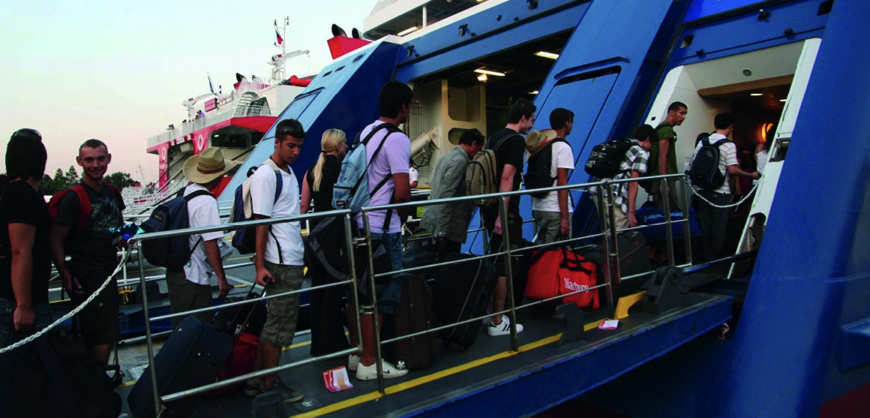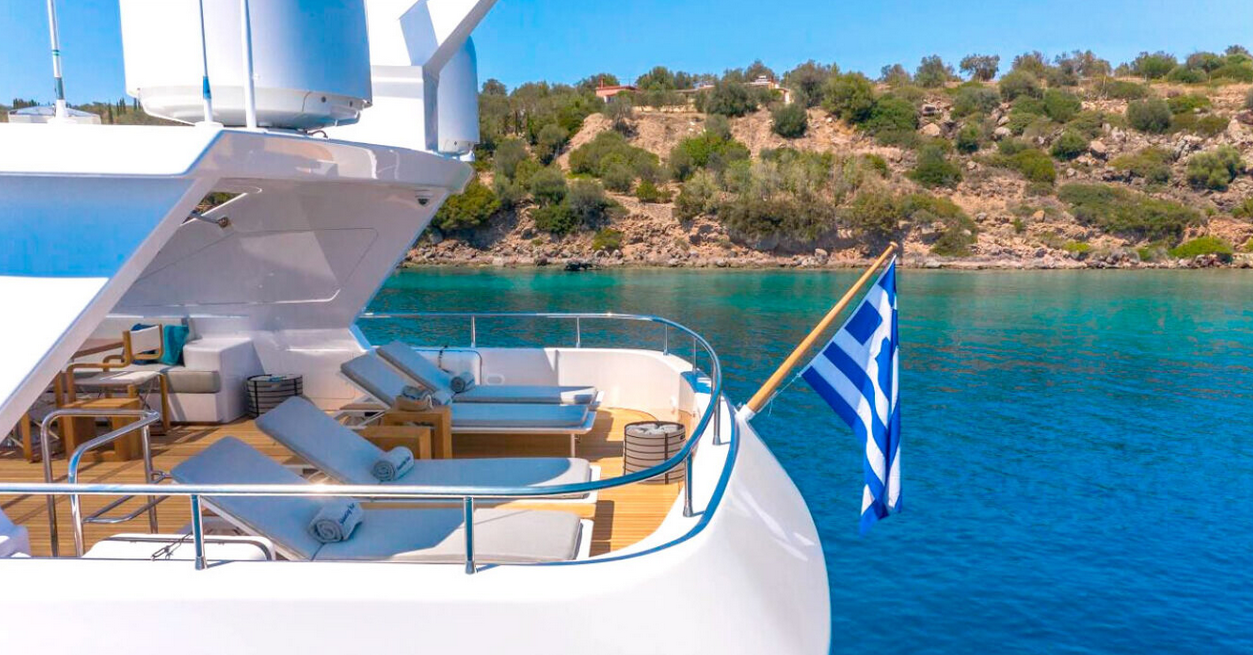Ferry ticket prices remain high this year despite fuel prices having fallen on most types used by both fast ferries and conventional ferries.
This is evident from the price lists issued by the ferry companies for the current year, bringing to mind last season, when it took government intervention to bring down prices a little for the ferry companies, and which they are now bringing back.
The problem with punctuality is more pronounced and borders on the absurd on the intra-cyclical routes and this is because it costs much more to go from one Cycladic island to another where the distances are short, than to go directly from… Piraeus!
As the distance decreases, the price of the ticket increases, with a prime example being the route Milos – Mykonos or Milos – Koufonisi, which is served only by speedboat and the fare for 68 nautical miles is 108 euros.
That means that a family of 4 will have to pay 432 euros to go and another 432 euros to return, a total of 864 euros!
Ferry ticket prices remain high this year even though fuel prices have gone down on most types used by both speedboats and conventional ferries.
This is clear from the price lists issued by the ferry companies for the current year, bringing to mind last season, when it took government intervention to bring down prices a little for the ferry companies, and which they are now bringing back.
The problem with punctuality is more pronounced and borders on the absurd on the intra-cyclical routes and this is because it costs much more to go from one Cycladic island to another where the distances are short, than to go directly from… Piraeus!
As the distance decreases, the price of the ticket increases, with a prime example being the route Milos – Mykonos or Milos – Koufonisi, which is served only by speedboat and the fare for 68 nautical miles is 108 euros.
That means that a family of 4 will have to pay 432 euros to go and another 432 euros to return, a total of 864 euros!
“For August on the Piraeus – Heraklion route the price per passenger on deck ranges from 37 to 42 euros with conventional ferries for a distance of 173 nautical miles, while on the Piraeus – Paros route the price per passenger ranges at 55 euros for a distance of 96 nautical miles.
For almost twice the distance from Piraeus to Heraklion the price is not only the same as on the Piraeus – Paros route where the distance is almost half, but is also reduced by about 33% for vessels of exactly the same class.
The same strange situation with regard to prices and the distance covered by the vessels of the line also prevails on the routes between the Cyclades islands, i.e:
■ For the Piraeus-Santorini route in summer, the price per passenger on deck ranges from 49-63 euros with a conventional ship and 76-90 euros in numbered seats with a high-speed boat for a distance of 134 nautical miles.
■ The Mykonos – Santorini route is operated only by speedboats and the prices are exactly the same as from Piraeus, at 76-90 euros, for a distance of 67 nautical miles, which is half the distance from Piraeus to Santorini.
■ An even more extreme example is the route Milos – Mykonos or Milos – Koufonisi, which is served only by speedboat and the fare for 68 nautical miles is 108 euros”.
As the executives contacted by “Proto Thema” comment, “these examples show that there is no mechanism for calculating the fare per mile, but the companies where there is competition maintain their prices at reasonable levels, with the prices of speedboats to have a deviation, due to the shorter travel time and higher operating costs by 20%-30%, upwards.
Earthquake – Kefalonia: Tselenti’s analysis of the very intense microseismic action
However, on routes where there are no conventional ships or on intra-cyclical routes, prices are set at absurdly high levels, probably because they are aimed at the foreign tourist, who in theory can pay, but the message being sent to the global tourist market is that the Cyclades is a very expensive destination”.
Fuel prices in 2023 and 2024
Fuel costs for 2024 are projected to be stable and in some cases reduced compared to 2023.
Conventional ships burn two types of fuel: Those with only 0.5% sulphur content and those with 3.5% sulphur content, the so-called old type.
a) The former, with a sulphur content of 0.5%, are burned by ships which are not fitted with scrubbers-catalysts. In 2023 their average price was EUR 508 per tonne.
For 2024, the forecast is for €517 per tonne, an increase of 1.7%.
b) Conventional ships fitted with scrubbers burn fuel with a sulphur content of 3.5%. The average price per tonne in 2023 was €412.
The forecast for 2024 is 405 euro per tonne, a decrease of 1.7%.
However, according to the companies’ data, from the beginning of 2024 until today, fuel is purchased at a price of 415 euros a tonne.
As for high-speed vessels, they consume fuel with a sulphur content of only 0.1%, which is more expensive and cleaner and more environmentally friendly.
The fuel consumed in 2023 cost an average of €750 per tonne.
For 2024 there is no picture, as they start running in May. Forecasts put the price at 710 euros, so a 5.3% reduction in the tonne is expected.
Fuel prices in 2023 and 2024
Fuel costs for 2024 are forecast to be stable and in some cases reduced compared to 2023.
Conventional ships burn two types of fuel: Those with a sulphur content of just 0.5% and those with a sulphur content of 3.5%, the so-called old type.
a/ The former, with a sulphur content of 0.5%, are burned by ships which are not fitted with scrubbers-catalysts. In 2023 their average price was EUR 508 per tonne.
For 2024, the forecast is for €517 per tonne, an increase of 1.7%.
b/Conventional ships fitted with scrubbers burn fuel with a sulphur content of 3.5%. The average price per tonne in 2023 was €412.
The forecast for 2024 is 405 euro per tonne, a decrease of 1.7%.
However, according to the companies’ data, from the beginning of 2024 until today, fuel is purchased at a price of 415 euros a tonne. As for high-speed vessels, they consume fuel with a sulphur content of only 0.1%, which is more expensive and cleaner and more environmentally friendly. The fuel consumed in 2023 cost an average of €750 per tonne.
For 2024 there is no picture, as they start running in May.
Forecasts put the price at 710 euros, so a 5.3% reduction in the tonne is expected.








































